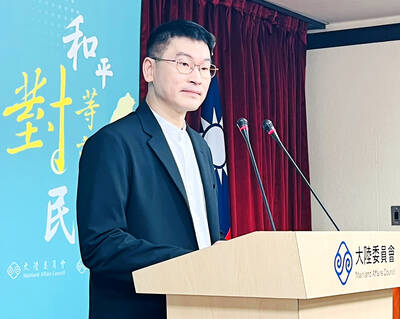The Taipei City Government is to establish an angel investment fund of NT$2 billion (US$71.85 million) to be used over five years to foster the growth of innovative industries, Taipei Mayor Ko Wen-je (柯文哲) said on Wednesday last week.
Ko said that Taiwan’s industrial sector was mostly comprised of original equipment manufacturing, but such practices could not indefinitely support Taiwan’s gross national income.
The Startup@Taipei office has assisted more than 30,000 start-up inquiries, provided NT$1.98 billion in start-up funding and helped negotiate more than NT$2.5 billion in start-up loans since 2015. To go beyond this success, the city government is to establish angel investment funds directly, Ko said.
Start-up investments are to take the form of stock ownership, Ko said, adding this method demonstrates responsible politics.
The Taipei City Ordinance for Receiving, Safekeeping, and Using Industry Development Funds (台北市產業發展基金收支保管及運用自治條例) was forwarded to the Taipei City Council for deliberation earlier this year, Ko said.
Taipei Department of Economic Development Commissioner Lin Chung-chieh (林崇傑) said that current subsidies only provide a single person or organization a one-time maximum subsidy of NT$5 million.
The ordinance would allow the government to collect some profit, which could then be invested in other start-ups, Lin said, adding that the funds would target technology and biotech companies.
The funds would be directed mostly to companies in Taipei, he said, adding that the city government would sell its stock within seven to 10 years after the investment pays for itself.

An essay competition jointly organized by a local writing society and a publisher affiliated with the Chinese Communist Party (CCP) might have contravened the Act Governing Relations Between the People of the Taiwan Area and the Mainland Area (臺灣地區與大陸地區人民關係條例), the Mainland Affairs Council (MAC) said on Thursday. “In this case, the partner organization is clearly an agency under the CCP’s Fujian Provincial Committee,” MAC Deputy Minister and spokesperson Liang Wen-chieh (梁文傑) said at a news briefing in Taipei. “It also involves bringing Taiwanese students to China with all-expenses-paid arrangements to attend award ceremonies and camps,” Liang said. Those two “characteristics” are typically sufficient

A magnitude 5.9 earthquake that struck about 33km off the coast of Hualien City was the "main shock" in a series of quakes in the area, with aftershocks expected over the next three days, the Central Weather Administration (CWA) said yesterday. Prior to the magnitude 5.9 quake shaking most of Taiwan at 6:53pm yesterday, six other earthquakes stronger than a magnitude of 4, starting with a magnitude 5.5 quake at 6:09pm, occurred in the area. CWA Seismological Center Director Wu Chien-fu (吳健富) confirmed that the quakes were all part of the same series and that the magnitude 5.5 temblor was

The brilliant blue waters, thick foliage and bucolic atmosphere on this seemingly idyllic archipelago deep in the Pacific Ocean belie the key role it now plays in a titanic geopolitical struggle. Palau is again on the front line as China, and the US and its allies prepare their forces in an intensifying contest for control over the Asia-Pacific region. The democratic nation of just 17,000 people hosts US-controlled airstrips and soon-to-be-completed radar installations that the US military describes as “critical” to monitoring vast swathes of water and airspace. It is also a key piece of the second island chain, a string of

The Central Weather Administration has issued a heat alert for southeastern Taiwan, warning of temperatures as high as 36°C today, while alerting some coastal areas of strong winds later in the day. Kaohsiung’s Neimen District (內門) and Pingtung County’s Neipu Township (內埔) are under an orange heat alert, which warns of temperatures as high as 36°C for three consecutive days, the CWA said, citing southwest winds. The heat would also extend to Tainan’s Nansi (楠西) and Yujing (玉井) districts, as well as Pingtung’s Gaoshu (高樹), Yanpu (鹽埔) and Majia (瑪家) townships, it said, forecasting highs of up to 36°C in those areas